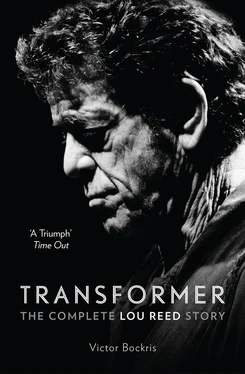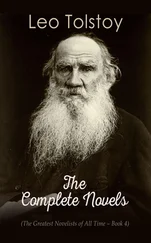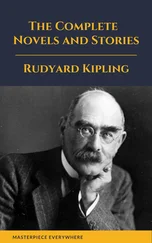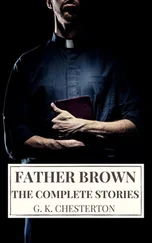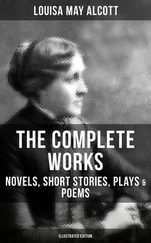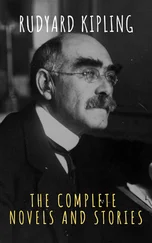Pickwick specialized in producing bargain-basement rip-off albums for a naive mass audience. For example, something like Bobby Darin Sings the Blues featured Darin crooning on exactly one song, squeezed in amidst ten other sung by Jack Borgheimer; the album of ten hot-rod songs by the Roughnecks sported a cover (minus Lou) of four gallivanting lads who looked, at a distance, suspiciously like the Beatles, but were in fact a bunch of pasty-faced session musicians wearing wigs. In other words, the album would say it featured four groups but it wouldn’t really be four groups, it would just be various permutations of the writers, and they would sell them at supermarkets for ninety-nine cents or a dollar. In retrospect, observed Phil Milstein, one of Lou’s most informed and appreciative critics and the founder in 1978 of the Velvet Underground Appreciation Society, “in many ways this is the craziest part of the entire crazy story. No work Lou has done is so trivial, so prefabricated, so tossed off, as what he did at Pickwick.”
The Roughnecks’ song “You’re Driving Me Insane” opened with a tuneless buzz of guitars and then applied the unschooled, scratchy sound of the Kinks to some riffs refined from Chuck Berry. Over the dense, muddy instrumental came the lyrics—half-spoken, half-forced—droned-out words that were supported by the eerie abandon of a rabble of party goers in the background: “The way you rattle your brain / You know you’re driving me insane.” Another contribution by another fake group, the Beachnuts’ “Cycle Annie,” with lyrics by Lou, mixed the surf sound with the first hints of the Velvet Underground. The song allowed Reed to assert himself lyrically with a tale of “a real tough chick” who “just didn’t come any meaner.” Filled with Reedian characters and his playful love of three-chord rock and roll, “Cycle Annie” would have fitted just as well on Loaded .
Lou and his fellow songwriters wrote as fast as they could. Although the setup lacked the glamour of the rock-and-roll lifestyle, it had redeeming educational value. “There were four of us literally locked in a room writing songs,” Reed recounted. “We just churned out songs, that’s all. They would say, ‘Write ten California songs, ten Detroit songs,’ then we’d go down into the studio for an hour or two and cut three or four albums really quickly, which came in handy later because I knew my way around a studio, not well enough but I could work really fast. While I was doing that, I was doing my own stuff and trying to get by, but the material I was doing, people wouldn’t go near me with it at the time. I mean, we wrote ‘Johnny Can’t Surf No More’ and ‘Let the Wedding Bells Ring’ and ‘Hot Rod Song.’ I didn’t see it as schizophrenic at all. I just had a job as a songwriter. I mean, a real hack job. They’d come in and give me a subject, and we’d write.
“I really liked doing it, it was really fun, but I wasn’t doing the stuff I wanted to do. I was just hoping I could somehow get an in, which, in fact, worked out. It’s just worked out in an odd way. But, at least it was something to do with music.”
Naturally, Lou told friends that he hated working at Pickwick and expressed endless bitterness over Phillips’s failure to see any merit in Reed’s own compositions. “I’d say, why don’t we record these?” remembered Reed. “And they’d say ‘No, we can’t record stuff like that.’” (One can only wonder how Johnny Don’t Shoot No More , Ten Drug Songs would have gone over in that halcyon era.) But the truth is that the detached observer in Lou was making out like a bandit in this situation. In fact, he should have been paying them for the very useful education in how to use a recording studio and work with helpful collaborators for whom he would in time come to realize a strong need. Never was he more prolific than during his Pickwick days. Over the course of a few months Reed and his three collaborators published at least fifteen songs. The five months he spent at Pickwick from September 1964 to February 1965 provided the best on-the-job training he could possibly have had for a career in rock and roll.
Chapter Five
The Formation of the Velvet Underground
ON THE LOWER EAST SIDE: 1965
The best things come, as a general thing, from the talents that are members of a group; every man works better when he has companions working in the same line, and yielding to stimulus and suggestion, comparison, emulation.
Henry James
It was through Pickwick that Lou met the man who would be the single most important long-lasting collaborator in his life, John Cale. One day in January 1965, Lou, who had not let hepatitis slow him down, had ingested a copious quantity of drugs. As he felt the rush of creativity coming on, he leafed through Eugenia Sheperd’s column in a local tabloid and came across an item about ostrich feathers being the latest fashion craze. Flinging down the paper and grabbing his guitar with the manic pent-up humor that fueled so much of his work, Lou spontaneously created a new would-be dance craze in a song called “The Ostrich.” It joyously told the dancer to put his head on the floor and let his partner step on it. What better self-image could Lou have possibly come up with than this nutty notion, except that the dancers give each other electroshocks?
Although it appeared unlikely that even rock-crazed teenagers, currently dancing the twist and the frug, would go for this masochistic idea, Shupak’s partner, Terry Phillips, desperate for a hit to exonerate his claim that the wave of the future was in rock, immediately snapped that this could be the hit single they had been looking for. With his spacey head full of images of millions of kids across America stomping on each other’s head (he was ten years ahead of his time), the ersatz Andrew Oldham (the Rolling Stones’ equally young and inexperienced producer) got the rock executives out in the warehouse to agree to his proposal that they release “The Ostrich” as a single by a make-believe band called the Primitives. When the record came out, they received a call from a TV dance show, much to their surprise, requesting a performance of “The Ostrich” by “the band.” Eager to promote his project, Phillips persuaded the Pickwick people to let him put together a real band to fill the bill. He saw the pleasingly pubescent-looking Lewis as a natural for lead singer. But he was less than enthusiastic about the other musicians, who did not have the requisite look to con the teen market into spending their spare dollars on “The Ostrich.” Frantic to get the show on the road, Phillips began to search for a backup band for Lou Reed.
From the Pickwick studio the story cuts to Terry Phillips at an Upper East Side Manhattan apartment jammed with a bunch of pasty-faced party people all yukking it up and trying to be cool despite having no idea at all about anything. Ensconced among them, highly amused and somewhat above it all, were the unlikely duo of a big-boned Welshman with a sonorous voice named John Cale and his partner and flatmate, the classic nervy-looking underground man Tony Conrad. In their early twenties and sporting hair unfashionably long for those days, Cale was a classical-music scholar, Conrad an underground filmmaker, and they were both members of one of the midsixties most avant-garde music groups in the world, La Monte Young’s Theater of Eternal Music. On the trail of female companions and good times, they had been brought to the party by the brother of the playwright Jack Gelber, who had recently written a famous play about heroin called The Connection . Spotting these reasonably attractive and slightly eccentric-looking guys with long hair, Terry Phillips immediately asked them if they were musicians. Receiving an affirmative response, he took it for granted that they played guitars (in fact Cale played an electrically amplified viola as well as several Indian instruments) and snapped, “Where’s the drummer?”
Читать дальше
